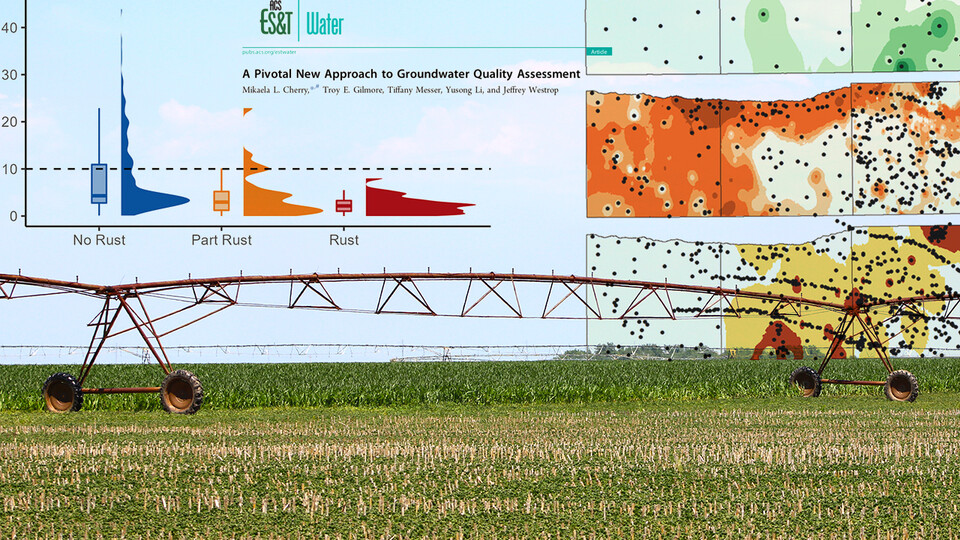Rust-stained irrigation pipes hint at lack of nitrate in groundwater

This is a summary of another article that was originally published by Nebraska Today; the link to the full article is below.
According to study from Department of Natural Resources researchers, irrigation pivots stained with rust may indicate the absence of nitrate in the groundwater supplying the pivots. The researchers categorized pivots in Adams, Kearney and Phelps counties by the amount of rust present on the pivots. They then used the Nebraska Groundwater Quality Clearinghouse to test the correlation between rustiness and nitrate concentration. The clearinghouse compiles water-sampling data collected by Tri-basin and Little Blue Natural Resource Districts (NRDs) along with others throughout the state.
After cross-referencing the locations of the pivots with their groundwater concentrations, they found that none of the 76 wells feeding into the full-rust pivots contained nitrate above the 10 mg/L threshold established by EPA with the average nitrate concentration being 2.4 mg/L. Most, but not all, of the groundwater supplying the part-rust pivots also sat below the threshold with an average of 4.5 mg/L. The pivots classified as no-rust had a wider range of classifications averaging 7.8 mg/L and reaching levels as high as 44 mg/L. Statistical analysis confirmed a clear difference; however, it was noted that larger sample sizes could further support the team’s conclusion. The team also observed that the rusty pivots occurred in patches. Although the researchers are not sure of what is responsible for the nitrate-rust link, they do have a hypothesis. This hypothesis involves the microorganisms, especially the bacteria, living in soil and groundwater. This information can potentially be used to help screen for areas for the potential absence of nitrate and, in an ideal world, could indicate areas at higher- or lower-risk for nitrate contamination before it becomes a problem. However, the proposed screening method is only applicable in areas that feature a fair amount of iron, typically areas adjacent to streams or rivers.
Read the full article at: https://news.unl.edu/newsrooms/today/article/rust-stained-irrigation-pipes-hint-at-lack-of-nitrate-in-groundwater/
Journal Article: Red Pivots and Nitrate: An exploration of visual water indicator
This article was reviewed by Leslie Johnson
Sign up for updates from UNL Water
